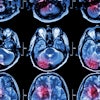
Patient communication in radiology departments is critical to the delivery of value-based care, and radiologists must adapt to the available technologies and the changing needs of patients and their desire for more engagement, leading European experts have asserted.
 Prof. Andrea Rockall.
Prof. Andrea Rockall."Clear, accurate information that patients can understand is important at every stage," noted Prof. Andrea Rockall, professor and clinical chair in radiology at Imperial College London, and colleagues. "Developing a culture of respectful and empathic communication is central to our goal through both training and leadership. Regular patient feedback is essential to monitor good practice and identify weaknesses."
With further developments of imaging techniques as well as artificial intelligence (AI) tools for early detection of disease and minimally invasive image-guided treatments, good communication in the radiology department is now very high on the agenda, they pointed out in an article posted on 12 August by the European Journal of Radiology.
Rockall and her fellow authors gave the following tips on how to communicate effectively when breaking bad news:
- Create a supportive environment.
- Be compassionate, honest, and direct.
- Use readily understood terms and avoid jargon.
- Optimize your listening skills.
- Ask open versus closed questions.
- Check the patient's understanding.
- Explain the initial next steps.
They emphasized the need to acknowledge patients -- greeting them by name and ensuring eye contact -- and the importance of radiologists introducing themselves, using their name and giving details about skillset and type of professional. Give accurate time expectations for tests and any updates or results: "Patients tolerate delays when they are kept informed."
Tell patients what to expect and give them any important contact information, listen to and answer any questions, and always thank them for their cooperation and support, they continued.
The authors said they agreed with the European Society of Radiology (ESR) President Dr. Adrian Brady and colleagues on patients' expectations for radiology results (see Radiology 2021;298[3]:486-91), in which accuracy and clarity are vital, as is timeliness.
"Lack of timeliness can lead to clinical error/delay in care. Consider the patient's preference for the type of communication," stated Brady, adding that access to reports, including special needs for hearing/visually impaired and giving digital access are other important considerations.
Communication gets overlooked
Despite the clear impact on patient experience and outcomes, communication is often overlooked in radiology training, according to Rockall.
"There is a recognized need for organized communications training, identified by both consultant and training radiologists, for written and face-to-face communications," she explained. "Education in communication skills and human factors are gradually being developed in radiology and should become part of the core curriculum.
There is room for development of tools for patient information for pre-visit preparation, thus leaving more time for better communications at the time of the visit, and there is hope that AI tools will provide some time gains that can then be re-allocated to direct patient interaction, wrote the authors, who highlighted the Radiology Communication Skills Assessment Tool (RCSAT).
Overall, though, measuring the impact of improved patient experience in radiology is challenging and needs further thought, the researchers pointed out.
"There are varying levels of communication expertise and training between team members and indeed we should consider additional solutions including training and enabling non-radiology imaging staff to offer appropriate information in a caring environment," they stated, adding that value-based radiology is a hot topic and suggested metrics and frameworks are being actively developed.
Rockall's co-authors of the EJR article are Caroline Justich (member of the ESR Patient Advisory Group), Prof. Thomas Helbich from Vienna, and Prof. Valerie Vilgrain from Paris.
Editor's note: Later this month we will post a follow-up interview with Andrea Rockall about her goals and priorities in her new role as the ESR's second vice president.



















